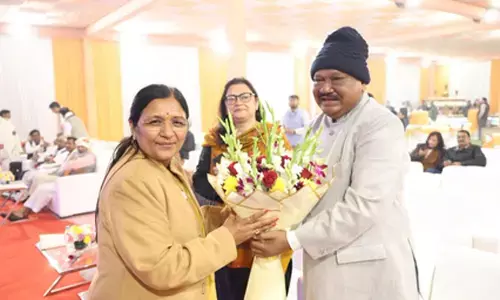Don’t neglect those genital warts, it might be Human Papillomavirus

Genital warts usually appear as a small bump or group of bumps in the genital area. They can be small or large, raised or flat. These warts are caused due infection in genitals caused due to Human Papillomavirus(HPV) which can be highly dangerous if left unattended.
Genital warts usually appear as a small bump or group of bumps in the genital area. They can be small or large, raised or flat. These warts are caused due infection in genitals caused due to Human Papillomavirus(HPV) which can be highly dangerous if left unattended. Most adults have been infected with HPV at some time. An infection may go away on its own. But sometimes it can cause genital warts or lead to cervical cancer.
Cervical cancer starts in the cells lining the cervix the lower part of the uterus (womb). This is sometimes called the uterine cervix. The fetus grows in the body of the uterus (the upper part). The cervix connects the body of the uterus to the vagina (birth canal).There are more than 100 types of HPV, of which at least 13 are cancer-causing (also known as high risk type).
HPV is so common that most sexually-active men and women will get at least one type of HPV at some point in their lives. As per the World Health Organisation, ‘Worldwide, cervical cancer stands fourth in the cancers effecting women with an estimated 5, 30,000 new cases in 2012 representing 7.5 per cent of all female cancer deaths. Of the estimated, more than 2, 70,000 deaths occur from cervical cancer every year. More than 85 per cent of these occur in less developed regions.’
In India nearly 75,000 women die of cervical cancer every year. This accounts to about 25 cent of all deaths caused by cervical cancer in the world. While women involved in sexual activities with multiple partners are more prone to getting infected with HPV, it can also transmit via oral or anal sex. But, the probability only comes down to 26 per cent if she is in a monogamous relationship.
Most of the times people suffering with HPV are not aware of it and also never observe symptoms or any health problems from it. Few of them find out they have HPV when they get genital warts. For many, abnormal Pap smear test (teat screening for cervical cancer) confirms the presence of HPV. On the other hand, others may only find out once they’ve developed more serious problems from HPV, such as cancers.
During a Pap smear test, the doctor extracts a small sample of cells from the surface of the cervix. If a Pap test shows abnormal cell changes, the doctor may do other tests to look for precancerous or cancer cells on cervix. In India, only 3 per cent of the women are coming forward for Pap smear test.Generally a woman is advised by a medical practitioner to start having a regular Pap smear test every two years from age 21 to 29 years, or after three years from the onset of sexual intercourse up to the age of 29 years; then every 3 years for women aged over 30 years with a history of 3 negative (normal) tests.
It is strongly recommended that women get screened regardless of their sexual preferences or practices.It takes 15 to 20 years for cervical cancer to develop in women with normal immune systems. It can take only 5 to 10 years in women with weakened immune systems, such as those with untreated HIV infection.
According to Indian Journal of Medical and Pediatric Oncology, ‘Indian women face a 2.5 per cent cumulative lifetime risk and 1.4 per cent cumulative death risk from cervical cancer. At any given time, about 6.6 per cent of women in the general population are estimated to harbor cervical HPV infection. HPV serotypes 16 and 18 account for nearly 76.7per cent of cervical cancer in India.
Warts have been reported in 2–25 per cent of sexually transmitted disease clinic attendees in India. The protection from cervical cancer should start at an early age of 11. It has been observed that in maximum cases, early diagnosis has helped patients fight and survive cancer.
Prevention
In general, the most effective way to prevent HPV is getting vaccinated against it between 11 and 14.The vaccine helps the person to attain immunity against the virus.
The vaccine is given in three shots. The second one is given after a month once she is administered with first dose. Third dose is given after five months after the second dose.
Other measures include regular use of condoms and sexual relationship with a single partner after reaching the age of 16. Healthy eating and hygienic lifestyles also helps being healthy.
It is also necessary to mention that condoms do not protect completely against HPV, since they do not cover the entire length of the penis or all areas of the genital regions. (The writer is a Consultant Medical Oncologist and Hemato-Oncologist and BMT physician)
By Dr Pavan Kumar B















